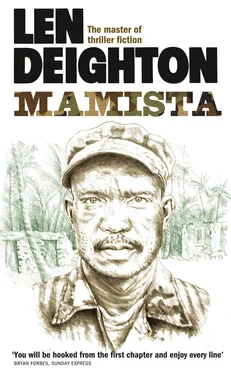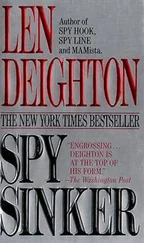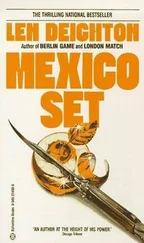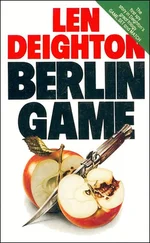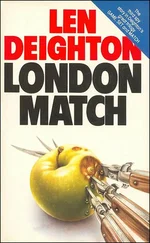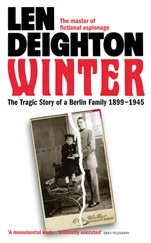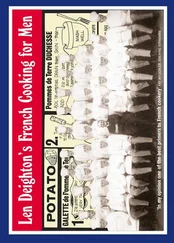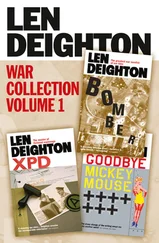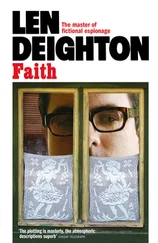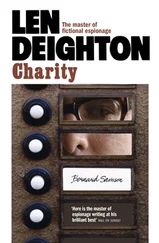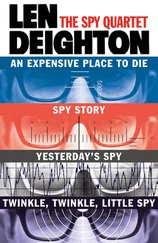This novel is entirely a work of fiction.
The names, characters and incidents portrayed in it are the work of the author’s imagination. Any resemblance to actual persons, living or dead, events or localities is entirely coincidental.
Published by HarperCollins Publishers Ltd 1 London Bridge Street London SE1 9GF
www.harpercollins.co.uk
This paperback edition 2011
First published in Great Britain by Century in 1991
Copyright © Len Deighton 1991
Introduction copyright © Pluriform Publishing Company BV 2011
Cover designer’s note © Arnold Schwartzman 2011
Len Deighton asserts the moral right to be identified as the author of this work
A catalogue record for this book is available from the British Library
MAMISTA. Copyright © Len Deighton 1991. All rights reserved under International and Pan-American Copyright Conventions. By payment of the required fees, you have been granted the nonexclusive, nontransferable right to access and read the text of this e-book on-screen. No part of this text may be reproduced, transmitted, downloaded, decompiled, reverse-engineered, or stored in or introduced into any information storage and retrieval system, in any form or by any means, whether electronic or mechanical, now known or hereinafter invented, without the express written permission of HarperCollins e-books.
Source ISBN: 9780007385850
EPub Edition © JULY 2011 ISBN: 9780007450855
Version: 2017-08-10
Cover
Title Page
Copyright
Cover designer’s note
Introduction
1
The smell of the rain forest came on the offshore…
2
The man’s name was buried in a Spanish Guiana file…
3
Ralph Lucas was forty-five years old and every year of…
4
Ralph Lucas did not much like flying and he detested…
5
From the top floor of the American embassy building on…
6
Despite his US passport, Angel Paz had not been permitted…
7
The glass doors of Tepilo’s police headquarters were tinted bronze.
8
‘Speedy Gonzales’ – Thorburn’s twin-engined Beech – might have been…
9
‘It’s not unlike Florida.’ When Jack Charrington closed his desk,…
10
The jeep’s engine was not running smoothly, and that worried…
11
A photograph of Rosario, artfully soft-focused and with some red…
12
By the time that Rosario was fully awake, the MAMista…
13
It was called ‘la residencia’: a grand country mansion in…
14
Ralph Lucas, sitting at his bench looking out of the…
15
The Roosevelt Room was the most elegant of all the…
16
It was called ‘the winter camp’ even now, when no…
17
In the first light of morning no landscape beckons the…
18
Where else in all the world, thought John Curl, could…
19
There is always mist on a jungle dawn. It sits…
20
Angel Paz’s father was five feet six inches tall. He…
21
The river was very wide. The far bank was shiny…
22
It had been a fiercely hot summer. The sprinklers could…
23
‘Do you believe in life after death?’ Singer asked. They’d…
24
It was not an ambush. The two parties had blundered…
25
No one was immune to the torments of the jungle.
26
There was a time when the President of the United…
About the Author
Other Books by Len Deighton
About the Publisher
Prompted by seeing the renderings of my two murals for Cunard’s new ship, Queen Elizabeth, Len Deighton suggested that I illustrate some of the covers of this next quartet of re-issues. I am delighted to be given the opportunity to draw once again, as it has been well over thirty years since my days as a regular illustrator for the Sunday Times.
MAMista is in many ways a remarkable work and it contains some complex and conflicted characters, who are all profoundly affected by the events in the story. I chose the idealistic young Marxist, Angel Paz, as an exemplar of this. By depicting this young man’s visage prematurely aged and hollowed out by experience, giving him that thousand-yard stare seen so often in photos by the likes of Robert Capa, James Nachtwey or Tim Page, I could best capture the heart of the book. It also allowed me to put him in the battered uniform of a MAMista rebel. Angel stands in front of the South American jungle, an actual and metaphorical character in the book representing entropy and decay, and here it pushes against the flimsy walls of the revolutionaries’ camp.
A trip to an army surplus store on Hollywood Boulevard provided me with the camouflage cap and an AK40 rifle pin for the back cover. I usually photograph the objects that decorate the back covers on our kitchen table, as the window’s translucent white curtains provide a very nice soft light, contrasting California’s hard shadows so much favoured by artist David Hockney.
For the book’s spine I purchased a pair of custom-made dog tags stamped with the name of another of the book’s characters, Ramon, a service number and ‘C’ for his religion. (Given Ramon is revolutionary leader of the MAMista, it might also stand for ‘comrade’.) Observant readers will notice that each of the spines in this latest quartet of reissues features a metallic object; a subtle visual link that draws together four books written and set in very different times and places.
I have taken the photograph for this book’s back cover with my Canon 5D camera, and my illustration was drawn with a HB Staedtler pencil.
Arnold Schwartzman OBE RDI
Hollywood 2011
The jungle is hot, dark and humid, and for people like me it is claustrophobic too. But the worst torment of squelching through dense vegetation for hour after hour is the pervasive and incomparable smell. Never mind the pretty jungle flowers, vivid in colour and menacing in size, and the hanging creepers that try to throttle you, or the wet air that makes breathing laboured, it is the powerful stink of rotting plants that even the most hardened veteran suffers and never forgets.
MAMista started far away from any jungle. It began with a meeting at a stall in an antique market in Islington, London. A chance remark about a small overpriced bronze ornament led to a conversation in a coffee shop nearby and a friendship. This stranger was a small man, about forty years old at that time, with a short haircut, outdoor complexion and steel-rim spectacles. His voice was low and I could not place his accent but he told me that he had been born in a seaside village in Tasmania and I had no reason to disbelieve him. He was wearing a well-worn Harris Tweed jacket with corduroy trousers. His open-necked khaki shirt was of the military sort with button-down pockets. I later discovered that he had been a doctor with the Australian Regiment in Vietnam. He had been with the first of the advisory teams in 1962 and stayed with the Regiment until he was ordered home; ‘Weary not wounded’ he explained when he finally talked about that time. ‘They fought through rain forest, grasslands and rubber,’ he said. ‘They were all good boys.’ An army doctor soon learns to be an untrained and unqualified surgeon, dentist and psychiatrist, he told me. At the time I met him he had given up both the army and medicine to become an auctioneer in a small country town in Cornwall. It was his experience with antiques that led to his remark about the bronze ornament I was admiring in the market. After a few more meetings in London I lost touch with him, and a year or so afterwards one of the market traders told me he had gone back to Australia. But my recollections of him remained vivid and the doctor in MAMista is not unlike him in physique and in that admirable Australian fortitude.
Читать дальше
